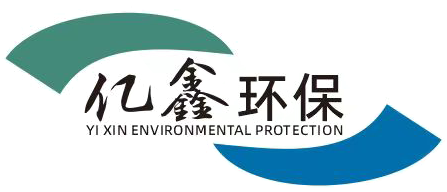What are the performance and characteristics of domestic sewage treatment equipment?
After screening, wastewater enters the equalization tank and then is pumped into the biological reactor. Oxygen is supplied by aeration machines activated by a PLC controller. The effluent from the biological reactor enters the membrane separation unit via a circulation pump. Concentrated water returns to the equalization tank. The water from membrane separation is disinfected using rapid mixing chlorination (sodium hypochlorite, bleaching powder, chlorine tablets) before entering the reclaimed water storage tank. A backwash pump uses treated water from the cleaning tank to backwash the membrane treatment equipment; backwash wastewater returns to the equalization tank. The operation of the lift pump is controlled by the water level in the biological reactor. The filtration and backwashing operations of the membrane unit can be controlled automatically or manually. When the membrane unit requires chemical cleaning, close the inlet valve and wastewater circulation valve, open the chemical washing valve and chemical circulation valve, and start the chemical circulation pump to perform the chemical cleaning operation.
Characteristics of domestic sewage treatment equipment
After screening, wastewater enters the equalization tank and then is pumped into the biological reactor. Oxygen is supplied by aeration machines activated by a PLC controller. The effluent from the biological reactor enters the membrane separation unit via a circulation pump. Concentrated water returns to the equalization tank. The water from membrane separation is disinfected using rapid mixing chlorination (sodium hypochlorite, bleaching powder, chlorine tablets) before entering the reclaimed water storage tank. A backwash pump uses treated water from the cleaning tank to backwash the membrane treatment equipment, and the backwash wastewater returns to the equalization tank. The operation of the lift pump is controlled by the water level in the biological reactor. The filtration and backwashing operations of the membrane unit can be controlled automatically or manually. When the membrane unit requires chemical cleaning, close the inlet valve and wastewater circulation valve, open the chemical washing valve and chemical circulation valve, and start the chemical circulation pump to perform the chemical cleaning operation.
Wastewater treatment equipment: Advantages of integrated wastewater treatment equipment
A thriving economy relies heavily on the support of related industries, such as manufacturing, services, and animal husbandry. However, the development of these industries inevitably generates numerous pollutants, such as wastewater and exhaust gases. Today, let's discuss integrated wastewater treatment equipment, a type of wastewater treatment equipment.
Industrial wastewater biotreatment system installation complete
Based on the water quality and quantity of wastewater in this project, the main wastewater treatment process design is as follows: Wastewater is first collected from the drainage pipeline and enters the grease removal tank to remove oil from the wastewater. Treatment system: Acid pickling and phosphating wastewater: grease removal tank - equalization tank - sedimentation - flotation. First, remove a large amount of high-load pollutants such as oil and phosphating substances from the wastewater. The effluent enters the intermediate water pool, and is quantitatively lifted by a quantitative pump to a *** integrated device for deep treatment, and finally discharged to meet the standard. The sludge after sedimentation and flotation treatment at various levels is discharged into the sludge tank, concentrated in the sludge tank, and then dehydrated by a filter press for disposal.
VOCs treatment process - rotary concentrator + catalytic combustion
VOCs are diverse, complex in composition, and varied in properties. In many cases, a single purification technology is often insufficient to meet treatment requirements and is uneconomical. By utilizing the advantages of different unit treatment technologies and adopting a combined treatment process, not only can emission requirements be met, but also the operating costs of the purification equipment can be reduced. Therefore, in the treatment of organic waste gas, the combined process of two or more purification technologies has rapidly developed. Zeolite rotary concentration technology is a new technology developed for the treatment of low-concentration VOCs, which, when combined with catalytic combustion or high-temperature incineration, forms a zeolite rotary adsorption concentration + incineration technology. I. Current Status of Technological Research The honeycomb rotary adsorption + catalytic combustion treatment technology is an organic waste gas treatment system invented in the 1970s by ***. The adsorption device is a honeycomb rotary wheel assembled from corrugated cardboard made of molecular sieves, activated carbon fibers, or carbon-containing materials. The adsorption and desorption airflow directions are opposite, and the two processes are carried out simultaneously.






